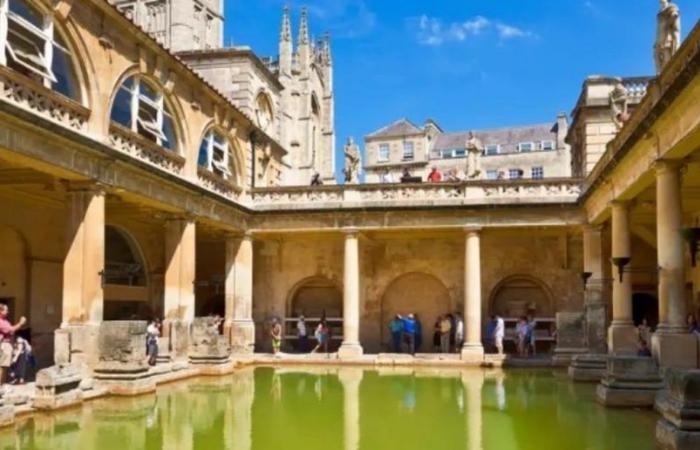Thursday 13.6.2024
/
Last update 22:52
In the heart of England, the historic Roman baths of Bath, known since ancient times for their therapeutic benefits, are at the center of potentially revolutionary research.
This study, carried out by the University of Plymouth in collaboration with site staff, has discovered a wide range of microorganisms capable of contributing to the creation of new antibiotic treatments.
This finding is crucial given that antimicrobial resistance represents a global threat that currently causes approximately 1.27 million deaths a year and could escalate to 10 million by 2050, according to previous research.
Known in Roman times as Aquae SulisBath Baths were built over three natural hot springs with temperatures varying between 40 and 45°C, heated by geothermal activity.
Rainwater, filtered through the limestone rock of the Mendip Hills and the Avon Valley, is heated at great depths before emerging to the surface. This water has historically been considered for its healing properties, a belief that may now have scientific backing.
The study, published in the journal The Microbe, is the first to provide a detailed examination of the bacterial and archaeal communities in the waters of this popular tourist attraction.
Using advanced sequencing technologies, the researchers analyzed water, sediment and biofilm samples from the complex’s hot springs, including Manantial del Rey, where the waters reach about 45ºC, and the Great Bath, with temperatures close to 30ºC.
This exhaustive analysis allowed the isolation of around 300 different types of bacteria, highlighting groups such as Actinobacteria and Myxococcota, known for their ability to produce antibiotics.
Of these organisms, 92 showed initial antibiotic activity against common pathogens such as E. coli and Staphylococcus aureus. Even more impressive, 15 of these microorganisms exhibited “broad spectrum activity” against at least three of the bacteria of the ESKAPE group, identified by the World Health Organization as a priority in the need for new antibiotics.
See also
See also
Thanks to Artificial Intelligence, they found almost a million possible natural antibiotics
“This study has demonstrated for the first time some of the microorganisms present in the Roman Baths, revealing them as a potential source of discovery of new antimicrobials,” said Dr. Lee Hutt, leader of the research.
“It is ironic that the waters have been considered for their medicinal properties for centuries and now we could be about to discover that there was a scientific basis to those ancient beliefs,” he added.
Importance of preserving the planet’s unique ecosystems
Although more research is still needed to turn these findings into effective treatments, the potential of Roman baths as a source of new antimicrobials is great. However, this discovery not only begins a new chapter in the search for natural antibiotics, but also highlights the importance of preserving and studying our planet’s unique ecosystems.
The legacy of the Baths could be about to be enriched by a new chapter, this time within modern medical science, offering renewed hope in the fight against one of the greatest threats to global health.






